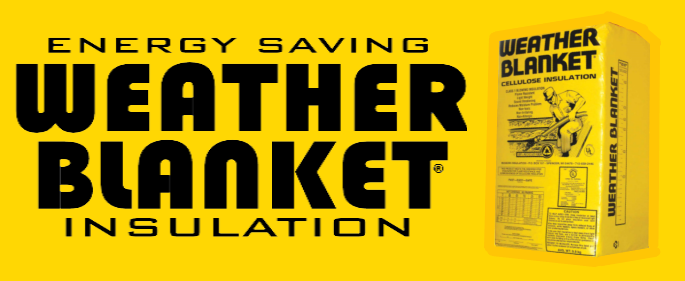Cellulose Insulation for Homeowners
Request Call Back
Insulation Helps Save the Environment
Weather Blanket Insulation wants to make you aware that the single biggest money-saving and environmental decision you can make for your house is to install the correct amount and type of insulation.
With the rising cost of energy, it makes financial sense to invest in an insulation product that helps you lower your utility bills every year while giving you the peace of mind that you are also making the right choice for the environment.
By diverting tons of waste paper from landfills, Weather Blanket Insulation reprocesses the material into high-performance insulation. Not only do you help the environment by saving energy to heat and cool your home, but you also help save valuable landfill space by reusing waste paper.
If you want to save money, minimize outside sound, and enjoy outstanding comfort, then learn more about mold-resistant, fire-resistant, safe, and effective cellulose insulation from Weather Blanket Insulation.
Benefits
A properly insulated home can provide comfort and save you money on utility bills. Weather Blanket's cellulose insulation provides even more security, including reducing noise, excellent fire protection, as well as the peace of mind that your insulation is the best environmental choice.
- Energy savings
- Sound control
- Fire protection
- Mold resistance
- Corrosion
No matter how old your house is, you should always see if there is enough insulation in the attic. To determine if you have enough insulation, measure the depth of insulation in your attic. If you have 13-14 inches of cellulose insulation or 19 inches of blown fiberglass you should be at the right R-49 level. if you have less than that, you can save money by installing more cellulose insulation on top of the existing insulation.
If your attic is correctly insulated and the house still seems to be “leaking heat” in winter or getting too hot in summer, check your windows and doors for a tight seal. It may mean that you need to add insulation to your sidewalls, crawl spaces, or your basement.
Air/Vapor Barrier
Air infiltration is almost as important as R-value in the thermal performance of a building. Infiltration of unconditioned ambient air means that heating and cooling systems must expend more energy to compensate for the infiltration.
A common misconception is that vapor barriers are required in all insulation installations. With our cellulose insulation, a vapor barrier is not recommended except in very cold weather or high moisture areas such as spas or pool buildings. However, many building codes require an air barrier or vapor retarder to be installed. Check your local building codes for compliance.
Insulation inhibits the movement of air from warm to cold (and vice versa) by trapping air or gas between its fibers or pores. The higher the density of the material used, the better it is at inhibiting the movement of air. Cellulose insulation has a high density compared to fiberglass.
Blow-in cellulose insulation seals houses better by limiting the airflow, not only through the insulating material, but also around difficult-to-insulate areas such as the gaps around electrical boxes, wiring, and plumbing. Cellulose insulation can also handle non-standard or off-center wall stud spacing areas better than batts.
Do-It-Yourself Insulation
While it is possible to install cellulose insulation yourself, to achieve the best insulation results, we recommend using a professional installer. Contact us today!
Reviews
Related Services
Learn More About Weather Blanket Insulation
New Paragraph


Share On: